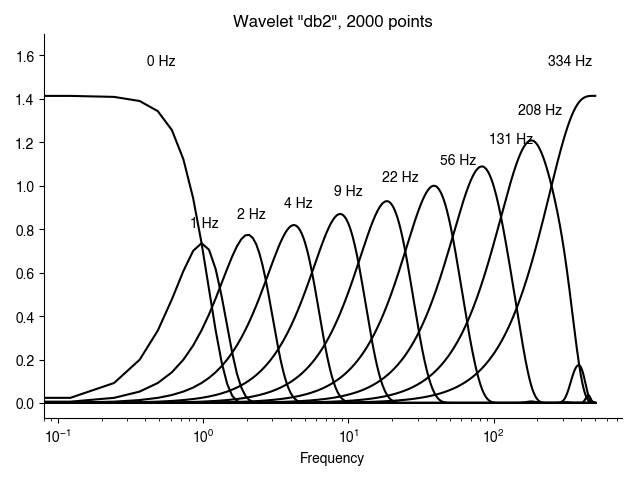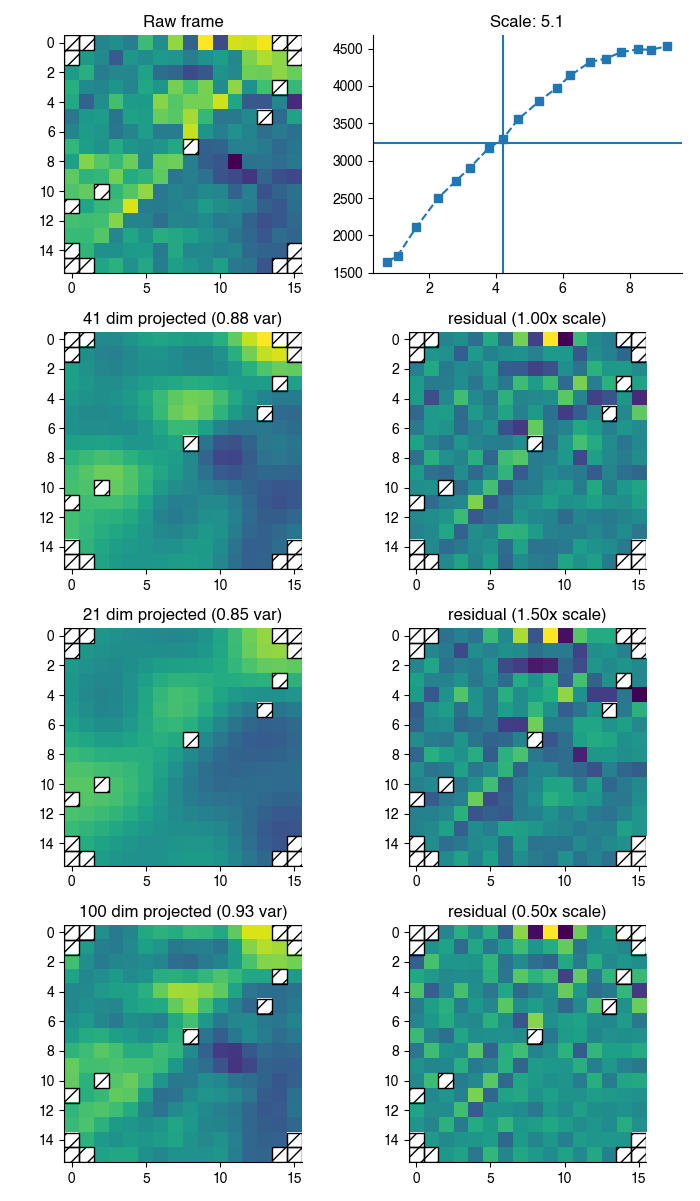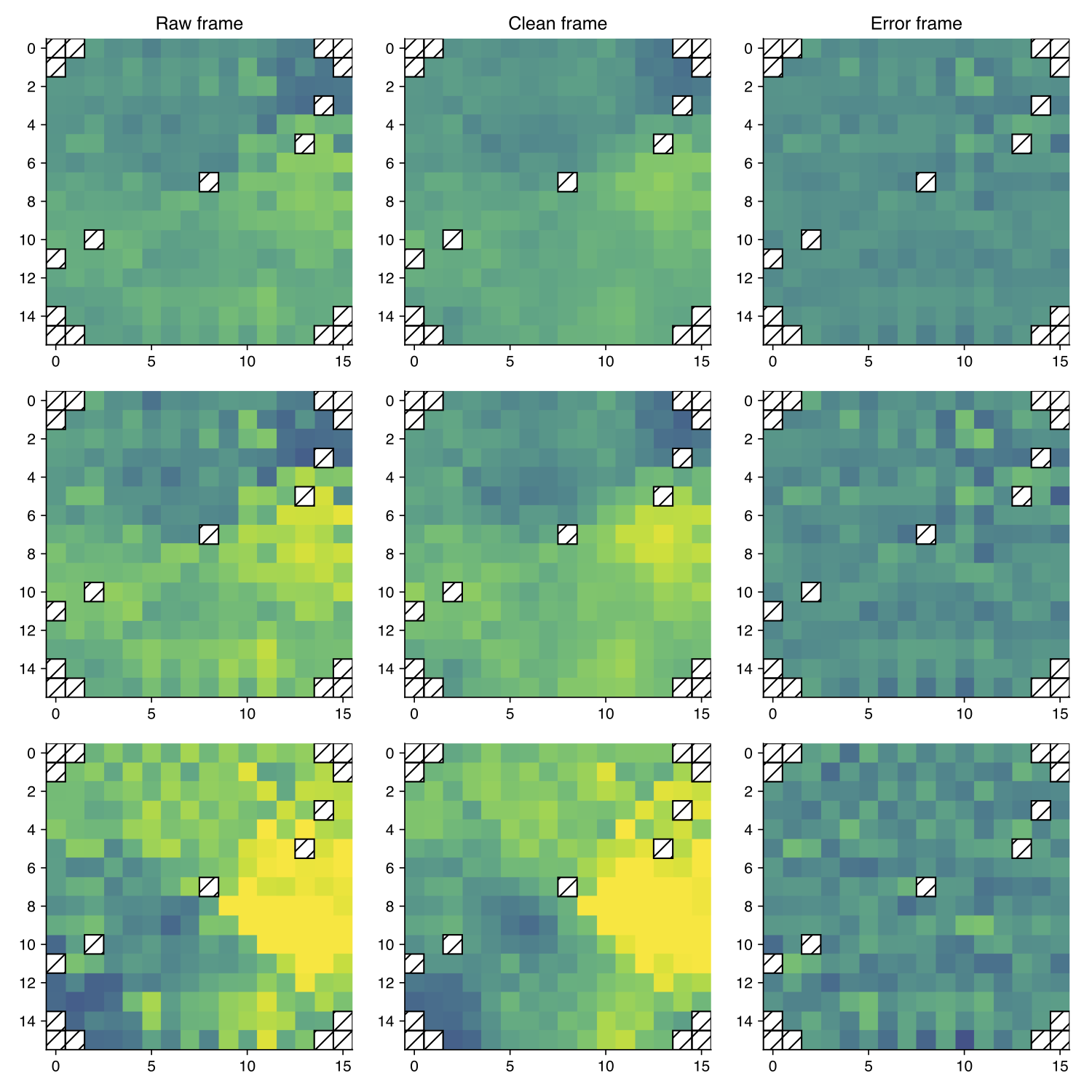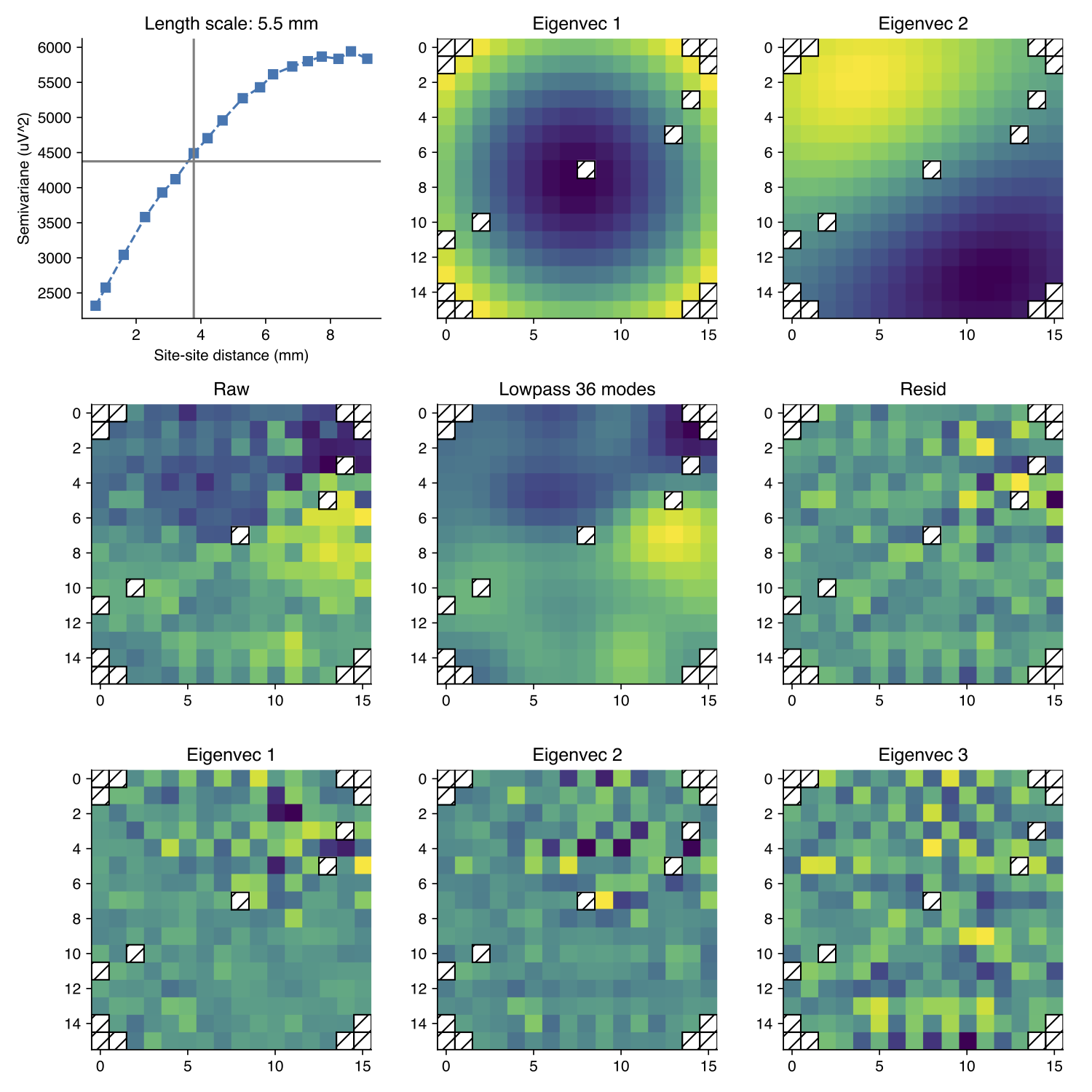This set of code performs artifact subtraction for the peculiar noise "structure" seen in the 244 channel LCP ECoG array. The algorithm is described in a notebook named "Structure_denoise_notes". There is also an extensive library of methods to visualize and predict the effects of processing parameters, which can be used to tweak processing for a particular recording.
The "structured artifacts" observed were caused by an error in channel mapping. This tool is no longer of use.
This code has been tested for Python 2 and Python 3.
- Set up a python installation (also see note below regarding writing h264 files through Python)
I recommend pyenv in conjunction with pyenv-virtual-env on mac or linux, described in the following steps. But conda (described after) is a "batteries-included" option that could be more convenient for any OS.
$ pyenv install [pythonversion, e.g. 2.7.14]
$ pyenv virtualenv 2.7.14 denoise_py2
$ pyenv activate denoise_py2
For windows specifically, there is a plain install, with system environment settings described here.
Alternatively, I have used miniconda detailed here, mostly with success. A working environment can be installed using conda like this from the Anaconda Prompt application, or a terminal in mac/linux:
conda create -c conda-forge -n denoise-env --file=conda-packages.txt
conda activate denoise-env
pip install mat4py
Then proceed to these steps.
- git-clone this repo:
git clone https://github.com/miketrumpis/structure_denoise.git - If not using conda, pip-install requirements:
pip install -r requirements.txt - pip-install this package:
pip install .
Note 1: the instructions here have installed software into virtual environments. These need to be re-activated any time the software will be used.
Note 2: you may need to pip-install a graphics backend to enable plotting
(e.g. pip install pyqt5 on python 3).
Note 3: video writing requires separate codec software, most likely "ffmpeg". This can be installed by hand and its path entered into the "matplotlibrc" settings file. Perhaps easier is to install it using the conda system, per the conda-packages.txt file
The driver script (driver.py) is an interface to the code base that can be run in multiple modes that steer usage. The full list of options is printed here. Due to the complexity of options, arguments pertaining to different run-modes can be written in individual files and then combined to perform the desired mode(s). For example, the driver script can be run with this syntax (with the "@" symbol processing the file name) to plug in options for the plot-wavelets-mode
$ driver.py @wavelet-mode-args.txt
These sections will be described subsequently.
usage: driver.py [-h] [--data-source DATA_SOURCE] [--source-type SOURCE_TYPE]
[--exclude-channels EXCLUDE_CHANNELS [EXCLUDE_CHANNELS ...]]
[--save-mod SAVE_MOD] [--reraise] [--multiresolution]
[--wavelet-name WAVELET_NAME] [--block-size BLOCK_SIZE]
[--model-var MODEL_VAR] [--resid-var RESID_VAR]
[--length-scale-bias LENGTH_SCALE_BIAS]
[--min-resid-rank MIN_RESID_RANK]
[--max-image-rank MAX_IMAGE_RANK] [--diagnostic-mode]
[--diagnostic-wavelet-level DIAGNOSTIC_WAVELET_LEVEL]
[--diagnostic-skip-video] [--plot-wavelet-mode]
[--wavelet-length WAVELET_LENGTH]
[--wavelet-samp-rate WAVELET_SAMP_RATE]
[--plot-projection-mode]
[--projection-wave-level PROJECTION_WAVE_LEVEL]
[--projection-deviation PROJECTION_DEVIATION]
[--projection-frame-start PROJECTION_FRAME_START]
Structure denoising command-line-interface
optional arguments:
-h, --help show this help message and exit
--data-source DATA_SOURCE
Path to data resource
--source-type SOURCE_TYPE
pesaran, open ephys, ...
--exclude-channels EXCLUDE_CHANNELS [EXCLUDE_CHANNELS ...]
Drop these channels from the array
--save-mod SAVE_MOD Modifier name for cleaned file
--reraise
--multiresolution Denoise wavelet scales
--wavelet-name WAVELET_NAME
PyWavelets wavelet name
--block-size BLOCK_SIZE
Processing block size in seconds
--model-var MODEL_VAR
Model covariance proportion
--resid-var RESID_VAR
Noise covariance proportion
--length-scale-bias LENGTH_SCALE_BIAS
Bias length scale estimates
--min-resid-rank MIN_RESID_RANK
Minimum dimension of noise space
--max-image-rank MAX_IMAGE_RANK
Maximum dimension of image space
--diagnostic-mode Make diagnostic plots for current settings
--diagnostic-wavelet-level DIAGNOSTIC_WAVELET_LEVEL
Wavelet level (or "all") for diagnostics (not
applicable if multiresolution is not set)
--diagnostic-skip-video
Skip (time consuming) video writing
--plot-wavelet-mode Plot wavelet bands
--wavelet-length WAVELET_LENGTH
Sequence length for wavelet decomp
--wavelet-samp-rate WAVELET_SAMP_RATE
Sampling rate
--plot-projection-mode
Demo image space projection
--projection-wave-level PROJECTION_WAVE_LEVEL
Use this wavelet scale level
--projection-deviation PROJECTION_DEVIATION
Show length scale deviation
--projection-frame-start PROJECTION_FRAME_START
Start frames here (-1 for random)
Here is an example of a file describing how to load a data source. It would be useful to keep a separate file describing each dataset.
$ cat data-source-args.txt
# path to the base of the dataset
--data-source=/Users/mike/experiment_data/180222_goose/002
# "type" of source (currently pesaran or open ephys)
--source-type=pesaran
# a list of channels to be dropped from analysis (due to recording snafu)
--exclude-channels 66 71 195
# if denoising the dataset, then an output file will be created with this modifier (default "clean")
--save-mod=multires-clean
Denoising is calculated on short time batches. The processing options are split between two parts: how to batch and preprocess batches, and the algorithm parameters themselves.
The batch processing arguments are
$ cat proc-args.txt
# --- Batch arguments ---
# If this argument is present, operate on wavelet subbands...
--multiresolution
# ...with this wavelet
--wavelet-name=db2
# This is the size of the short time batch in seconds
--block-size=0.5
# --- Method arguments ---
# Use a minimum of 3 dimensions for the noise projection
--min-resid-rank=3
# Bias the length scale estimates by -1 mm
--length-scale-bias=-1
# Other parameters:
#--model-var=0.95
#--resid-var=0.9
#--max-image-rank=80
Running the denoising in prime time can be done by concatenating a data source and processing arguments:
$ driver.py @data-source-args.txt @proc-args.txt --process-mode
Alternatively, those three arguments can be placed into another text file.
"Pesaran" style data sources use the "LFP" data block, resampled at 1 kS/s. The same kind of file (in the same channel order) is saved out.
"Open ephys" style data sources use a resampled set of channels in an HDF5 file, which includes at 4 x 64 ADC channels. The denoised array vectors are re-mapped to the original acquisition order.
Currently any discarded or non-array channels are zeroed out, rather than preserved.
This is a stand-alone mode to visualize the wavelet frequency bands.
$ cat wavelet-mode-args.txt
# This argument turns on wavelet mode
--plot-wavelet-mode
# Use this wavelet name (from PyWavelets)
--wavelet-name=db2
# Data block length
--wavelet-length=2000
# Sampling frequency
--wavelet-samp-rate=1000
Running
$ driver.py @wavelet-mode-args.txt
results in this image
This mode demonstrates the first stage of the artifact estimation, which is a projection of the ECoG frame to a model image space. This mode requires both a data source and processing parameters, which are linked within the file using the same "@" symbol.
$ cat projection-plots-args.txt
# Turn on projection mode
--plot-projection-mode
# Look at this wavelet level (wavelet specified in processing args, or defaulted)
--projection-wave-level=4
# Compare projections at length scales +/- 0.5 mm
--projection-deviation=0.5
# Demo with a block starting at this time in seconds (otherwise use a random block)
--projection-frame-start=30
# link in data
@data-source-args.txt
# link in processing specs
@proc-args.txt
Running
$ driver.py @projection-mode-args.txt
results in this image
In this mode, a single data block is denoised and various diagnostic images are created, along with a video showing the raw, cleaned, and residual frames in left-to-right order. This mode can be used to predict the quality of denoising for the current method settings. Plots and videos are saved in a timestamped subdirectory under diagnostic_plots, which is created in the present directory.
$ cat diagnostic-mode-args.txt
--diagnostic-mode
# Show plots for a single wavelet level (enter a number), or all levels
--diagnostic-wavelet-level=all
# If present, skip writing videos
# --diagnostic-skip-video
# this mode also needs a data source and processing parameters
@data-source-args.txt
@proc-args.txt
Running
$ driver.py @diagnostic-mode-args.txt
results in images such as these, shown for wavelet level 3



